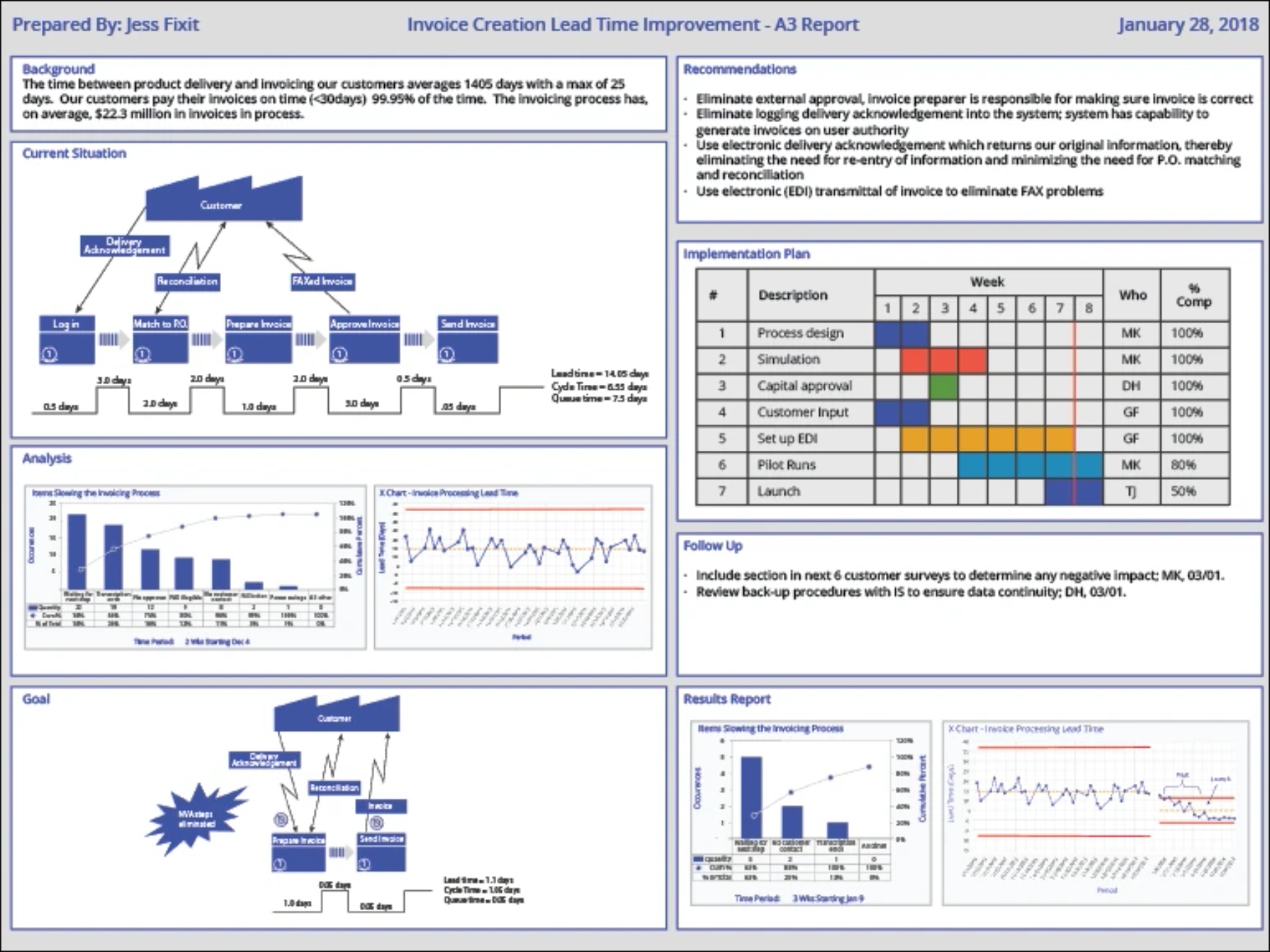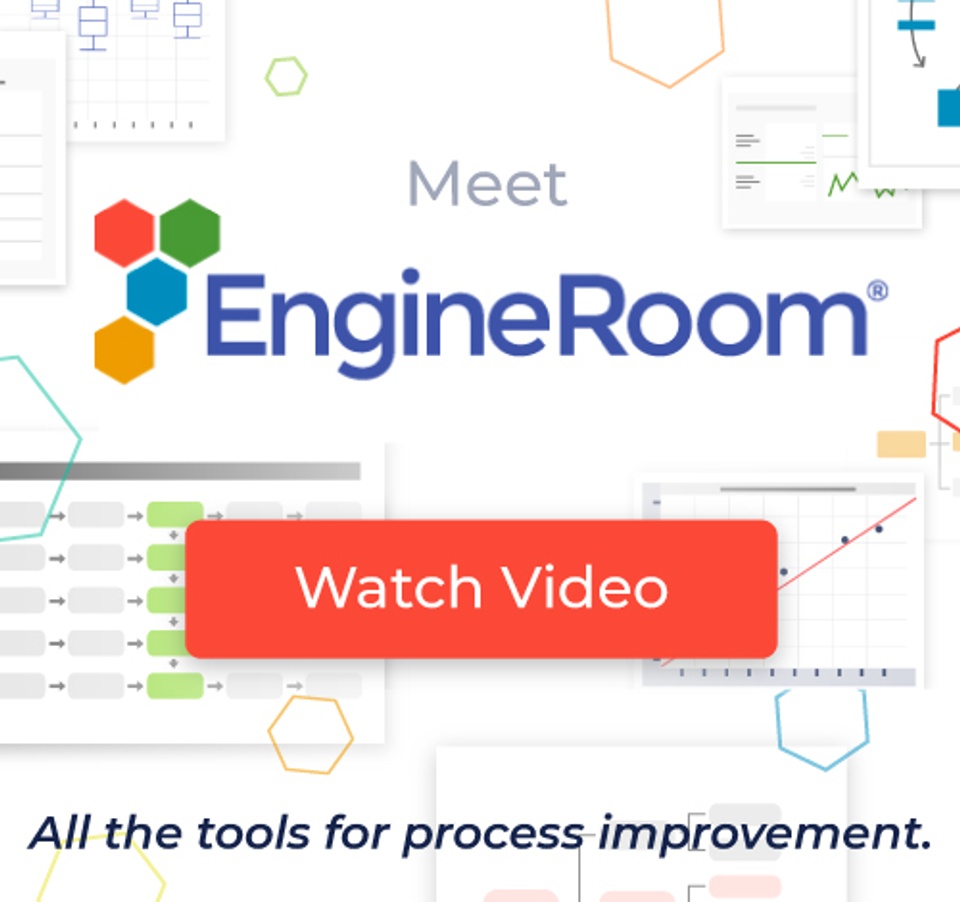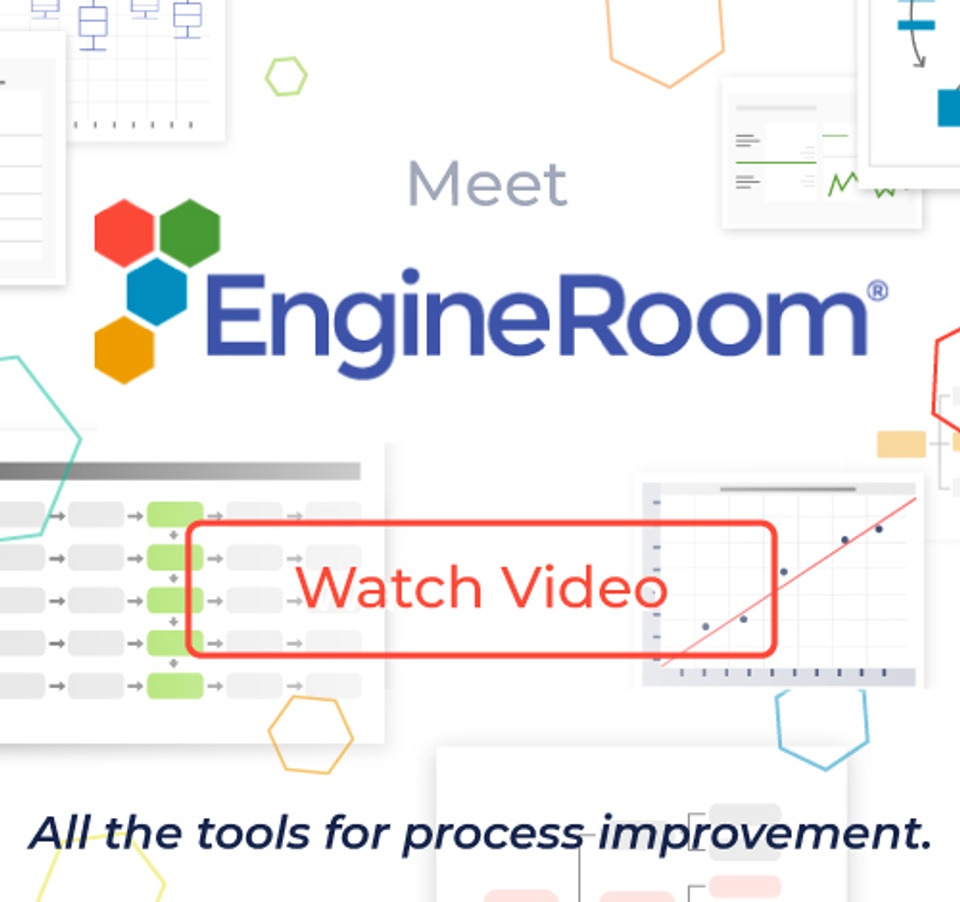The A3 Report
Description
An A3 Report is meant to identify and communicate the critical project information and to facilitate decision-making. A3 Reports simplify project reporting because they pull from otherwise numerous, detailed progress reports and extensive background analyses. A3s condense the information to a single page and visually communicate to the reader using graphs, charts, and succinct bullet points.
Also referred to as "one-pagers," the A3 Report got its name from Toyota Motor Company. "A3" refers to the metric paper size on which the report is produced (equivalent to a paper size of 11 inches x 17 inches).
Report Composition
A3 One-Page Reports typically include:
- Background - A brief description of the problem, highlighting the importance to the organization and the measures used.
- Current Situation - Visual depictions of the problem under consideration.
- Analysis - The analysis performed to determine root cause or causes.
- Goal - A visual description of what the situation would need to be so the problem does not reoccur.
- Recommendations - The solution that will be (or has been) implemented.
- Implementation Plan - Tasks, start dates, duration, responsibilities, and completion status (this is optional when the A3 Report is used as a progress tracking report).
- Follow-Up - Post-implementation tasks to ensure solution benefits are maintained.
- Results Report - Charted progress to plan with implementation and measures (this report is also optional when the A3 Report is used as a progress tracking report).
Summary
An A3 Report identifies and communicates critical project information and facilitates decision-making. This report should easily fit on one page. It is characterized as a Lean tool best suited for solving relatively short-duration Kaizen improvement activities. It may be less useful in a DMAIC environment or for more complex projects.



